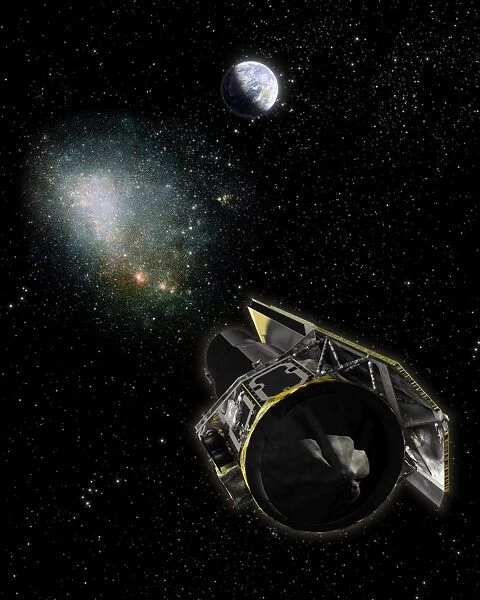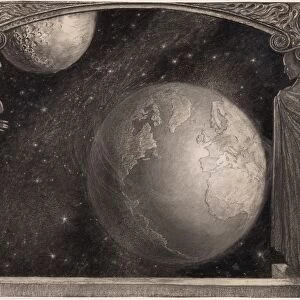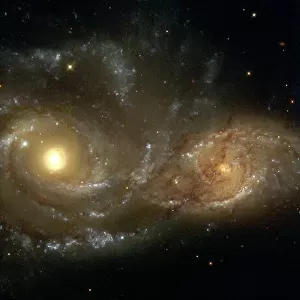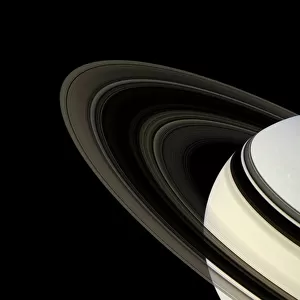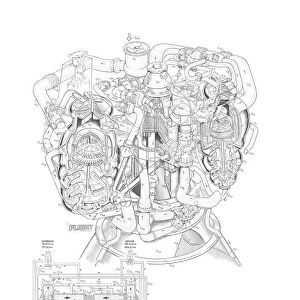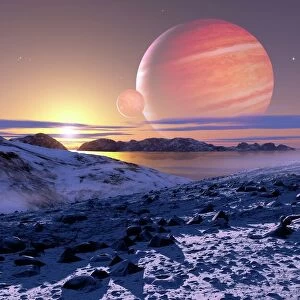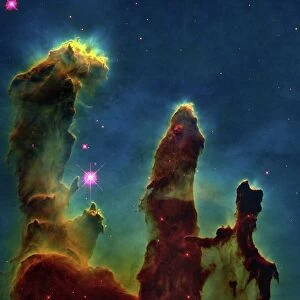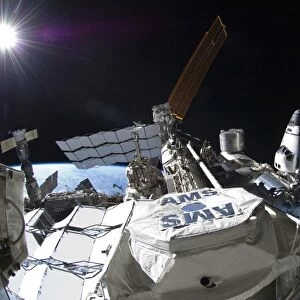Home > Arts > Artists > P > those present
Earth, a Milky Way object, and the Spitzer Space Telescope
![]()

Wall Art and Photo Gifts from Stocktrek
Earth, a Milky Way object, and the Spitzer Space Telescope
Using the unique orbit of the Spitzer Space Telescope and a depth-perceiving trick called parallax, astronomers have determined the distance to an invisible Milky Way object called OGLE-2005-SMC-001. This artists concept illustrates how this trick works: different views from both Spitzer and telescopes on Earth are combined to give depth perception. Our Milky Way galaxy is heavier than it looks, and scientists use the term dark matter to describe all the heavy stuff in the universe that seems to be present but invisible to our telescopes. While much of this dark matter is likely made up of exotic materials, different from the ordinary particles that make up the world around us, some may consist of dark celestial bodies, like planets, black holes, or failed stars, that do not produce light or are too faint to detect from Earth. OGLE-2005-SMC-001 is one of these dark celestial bodies. Although astronomers cannot see a dark body, they can sense its presence from the way light acts around it. When a dark body like OGLE-2005-SMC-001 passes in front of a bright star, its gravity causes the background starlight to bend and brighten, a process called gravitational microlensing. When the observing telescope, dark body, and star system are closely aligned, the microlensing event reaches maximum, or peak, brightness. A team of astronomers first sensed OGLE-2005-SMC-001s presence when it passed in front of a star in a neighboring satellite galaxy called the Small Magellanic Cloud. In this artists rendering, the satellite galaxy is depicted as the fuzzy structure sitting to the left of Earth. Once they detected this microlensing event, the scientists used Spitzer and the principle of parallax to figure out its distance
Stocktrek Images specializes in Astronomy, Dinosaurs, Medical, Military Forces, Ocean Life, & Sci-Fi
Media ID 13056039
© Stocktrek Images
Artificial Satellites Astrophysics Blue Planet Celestial Cosmology Dark Earth Galactic Galaxy Magellanic Clouds Milky Way Observatory Orbit Planet Robotic Spacecraft Satellite Shadow Small Magellanic Clouds Space Probes Space Telescope Spacecraft Spaceflight Spitzer Spitzer Space Telescope Star Systems Telerobotics Telescope Terra Three Objects Vehicle View From Space
FEATURES IN THESE COLLECTIONS
> Arts
> Artists
> P
> those present
EDITORS COMMENTS
This print showcases the intricate relationship between Earth, the Milky Way galaxy, and the remarkable Spitzer Space Telescope. Through its unique orbit and a fascinating technique known as parallax, astronomers have successfully determined the distance to an enigmatic object within our Milky Way called OGLE-2005-SMC-001. The concept art beautifully illustrates how this scientific trick works by combining different perspectives from both Spitzer and telescopes on Earth to create a sense of depth perception. It is astonishing to realize that our beloved Milky Way galaxy holds more weight than meets the eye. Scientists refer to this hidden mass as dark matter - all those heavy entities in the universe that remain invisible to our telescopes. While much of this mysterious dark matter consists of exotic materials beyond our comprehension, it is believed that some may be composed of dark celestial bodies such as planets, black holes, or failed stars. These objects do not emit light or are too faint for detection from Earth's vantage point. OGLE-2005-SMC-001 represents one such intriguing dark celestial body. Although we cannot directly observe these elusive entities, their presence can be inferred through their gravitational effects on surrounding light. When a dark body like OGLE-2005-SMC-001 passes in front of a bright star, its gravity causes bending and brightening of background starlight - an enthralling phenomenon known as gravitational microlensing. A team of dedicated astronomers first detected OGLE-2005-SMC-001 when it passed in front of a star in a neighboring satellite galaxy called the Small Magellanic Cloud. The artists' rendering portrays this satellite galaxy as a fuzzy structure positioned leftward from Earth's perspective. Through meticulous observations using Spitzer and leveraging the principle of parallax, scientists were able to determine the distance to OGLE-2005-SMC-001 with astounding precision. This achievement marks another milestone in unraveling the mysteries concealed within the vast expanse of our universe.
MADE IN THE USA
Safe Shipping with 30 Day Money Back Guarantee
FREE PERSONALISATION*
We are proud to offer a range of customisation features including Personalised Captions, Color Filters and Picture Zoom Tools
SECURE PAYMENTS
We happily accept a wide range of payment options so you can pay for the things you need in the way that is most convenient for you
* Options may vary by product and licensing agreement. Zoomed Pictures can be adjusted in the Cart.

